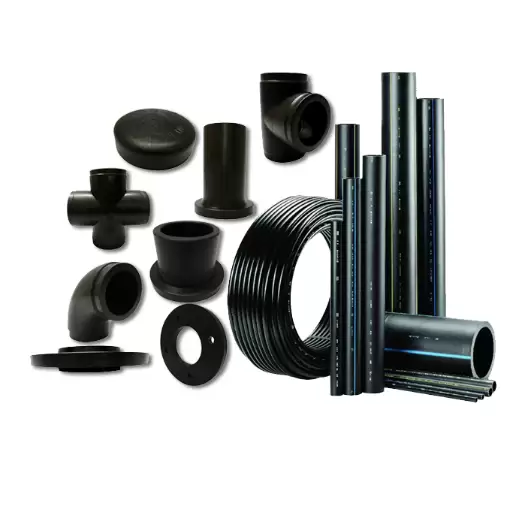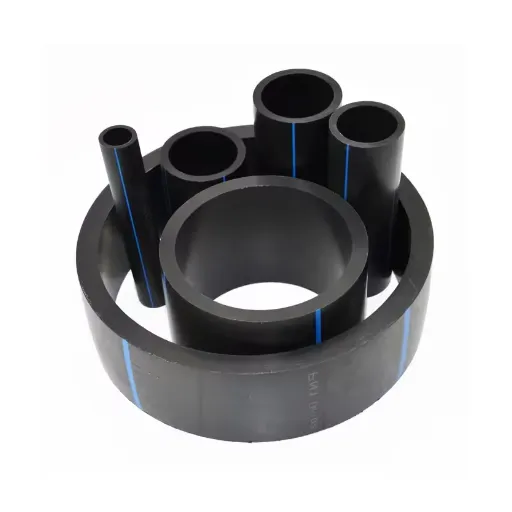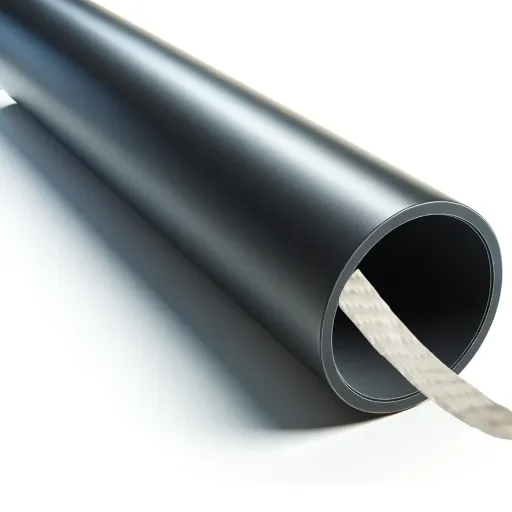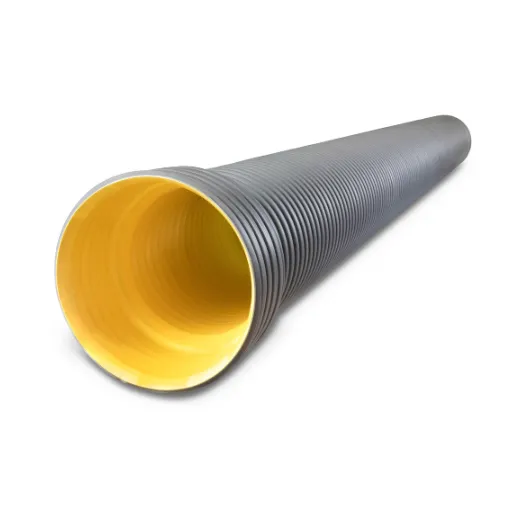High-density polyethylene (HDPE) pipe systems have revolutionized modern plumbing, irrigation, and industrial applications due to their exceptional durability, flexibility, and resistance to corrosion. However, an often-overlooked yet critical component of these systems is the selection of appropriate pipe connectors and fittings. Without the proper connectors, even the most advanced piping materials cannot achieve their full potential in performance and reliability. This guide is designed to provide you with a comprehensive insight into HDPE pipe connectors — exploring the various types, their specific applications, and the best practices for installation. Whether you are an engineer, contractor, or industry professional, understanding these components is essential for creating efficient and long-lasting systems. Read on to discover how HDPE fittings can enhance your project’s success.
What Are the Different Types of HDPE Pipe Fittings?
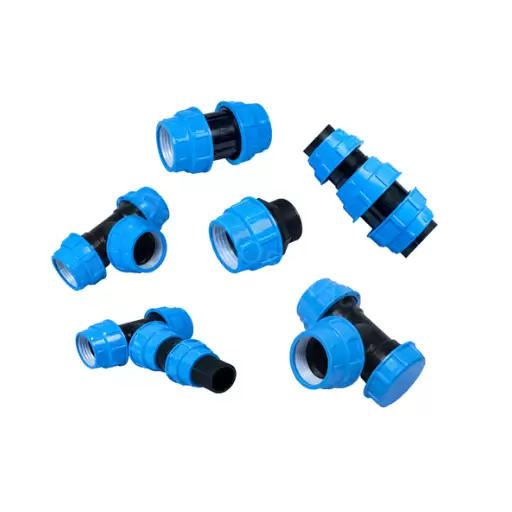
Exploring Common Coupling Solutions
The adaptability of high-density polyethylene pipes (HDPE) and their fittings is evident as they provide strong physical connections and seal them fully to prevent leakage. Below are the most common coupling solutions and their specific uses:
- Butt Fusion Fittings: HDPE pipe butt fusion is one of the most commonly used methods in the field. This fitting entails heating the ends of both pipes and then bringing them into contact under sufficient pressure until the molten material flows into the joint gap and solidifies as it cools. Butt fusion joints are characterized by uninterrupted seams, great strength, and good resistance against a range of service conditions. Because of this, it is preferred in high-pressure systems for water distribution and gas conveyance industries.
- Electrofusion Fittings: Electrofusion fittings are those that have a means for welding a fitting onto a pipe built in them and, therefore, require no outside equipment. These means comprise wires that are built into the joint and generate heat when there is voltage applied to them. This method is highly valuable in places where space is limited and equipment is required because of how precise it is. It works best where a strong bond is required and there are no gaps because it cannot be penetrated without being destroyed.
- Flange Connections: This is mostly used in applications using HDPE where the need arises to connect or disconnect the system from metal valves and pipes for maintenance. Flange systems enable the use of HDPE stub ends and metal backing rings, which can be bolted onto other devices. Flange systems allow maintenance-based installations or temporary setups without comprising the functioning structure.
- Compression Fittings: Unlike fusion methods, compression fittings utilize mechanical tightening. They are popular in portable and smaller systems that need rapid installation. Due to their flexibility, ease of use, and reusability, such fittings are widely used in irrigation systems and low-pressure systems.
- Spigot and Socket Fittings: Spigot and socket fittings work on a push-fit principle for connecting HDPE pipes. Due to pre-engineered designs meant for ideal alignment, their installation is simple and guarantees effective sealing. They are often used in temporary systems to quickly supply water in areas that need immediate use.
Choosing any of these coupling options will depend on their unique functional traits, which, while different, all work toward a specific operational need. Each type offers a different fix, with varying pressure tolerance and installation conditions, demanding careful consideration.
The Role of Elbow and Tee Fittings
The redirection and splitting of fluid flow in a piping system is done with the use of elbow and tee fittings. As the name suggests, elbow fittings are used when there is a change in the direction of flow at 45 degrees or 90 degrees. These components have an economical design to ensure minimum erosion and loss of pressure, which helps to improve the efficiency of the entire system. Their design must be accurate enough to make certain that no turbulence or stress concentrations are forming that can endanger the entire piping structure.
Tee fittings on the other hand serve the purpose of either splitting or merging fluid streams, hence creating junctions for several pipelines. They are very crucial in systems where fluids have to be collected or delivered in an efficient manner. Tee fittings also have different forms such as equal tee where all the openings have the same diameter and reducing tee where all the outlets have different sizes for provided system flexibility.
Both elbow and tee fittings should be chosen according to individual functional factors, which include the type of material, pressure and temperature limits, and the properties of the fluid being moved. As an example, a place applicable for the use of corrosive substances is stainless steel is often used. In addition, polymers like PVC or HDPE are commonplace in agricultural use or low-pressure pipelines. System fabrication requirements like ASME B16.9 or ISO 1127 guarantee the quality and consistency of these fittings in all places and for all uses. Their proper fitting improves the lifespan, safeguarding, and effectiveness of the systems utilized for the transportation of fluids.
How to Choose the Right HDPE Pipe Fittings for Your Application?
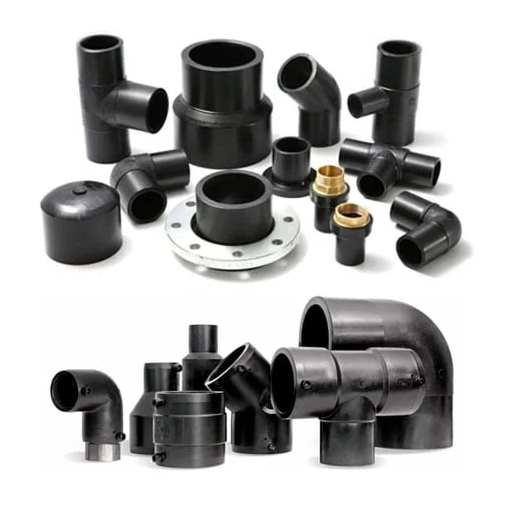
Considering Material and Size
Selecting the right HDPE pipe fittings entails thorough evaluation of the material and dimensional details. HDPE is particularly versatile because it is resistant to corrosion, chemicals, and weather due to having a high strength-to density ratio. Nonetheless, the grade of HDPE utilized must meet specific operational constraints like temperature and pressure limits, as well as chemical interactions.
Choosing the proper fitting size contributes to better system operation and prevents leaks. Nominal pipe diameter (DN) and wall thickness form the basis of pipe fittings’ measurement, and these are known as Standard Dimension Ratio (SDR). For instance, SDR 11 fittings are designed for high-pressure systems, whereas SDR 17 fittings are more commonly used in low-pressure applications. It is critical for the pipeline’s performance that the fitting dimensions match with the pipeline’s design without compromising structural integrity.
Considering material and size will improve the reliability and efficiency of fluid movement across industries, ensuring enhanced durability of HDPE piping systems.
Importance of Gasket and Seal in Hdpe Piping Systems
The operation and integrity of gaskets and seals in HDPE piping systems are vital for ensuring system containment, given that its applications severely restrict the fluid to be contained. Gaskets function as mechanical seals and are designed to close the gaps between two or more components in such a way that they can withstand temperature, pressure, and other external forces with a sufficient margin of safety, preventing leakage of fluids. Gasket materials must also be compatible with HDPE to ensure reliable gaskets are produced, especially with elastomers such as EPDM, Nitrile, or PTF,E which demonstrate substantial resistance to abrasives, chemicals, and other environmental conditions.
Seals provide enclosures to place through which pipes are connected, and in between the last two components, these pipe joints are flanges that serve as joints with a broad surface area, thus making use of the enclosure face. For HDPE systems, seals must be manufactured to comply with the retroactive change statute of thermal expansion and creep of polyethylene. Forged seals are made with high durability due to cyclic loading and pressure changes alongside aggressive fluids, creating a durable seal that is reliable long despite constant exposure to potential leaks.
New developments in sealing and gaskets have shown to improve functionality and performance of specific components designed to operate at higher levels of pressure and temperature. An example includes top-mounted composite gaskets with added graphite that now enable better sealing for HDPE piping systems subjected to both high pressure and chemically corrosive fluids. In addition, molded elastomeric seals created for HDPE systems facilitate ease of assembly and installation, which improves the reliability of the system.
During the design of gaskets and seals for HDPE systems, factors such as the type of fluid, the operating pressure, temperature ranges, and installation conditions should be thoughtfully considered. Selecting the wrong class of gasket or seal can create performance issues, unsafe conditions, or result in unplanned system outages. Regular inspections as well as planned maintenance in conjunction with the following described guidelines are vital in sustaining the enhanced functionality and structural durability of HDPE piping systems over time.
What Are the Advantages of Using High-Density Polyethylene Pipe Fittings?
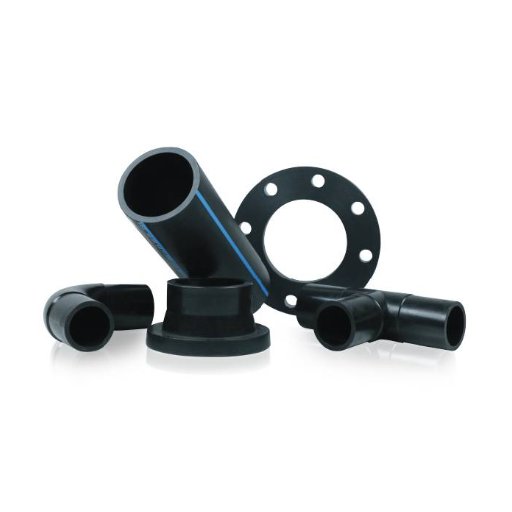
Durability and Corrosion Resistance
The versatility of different industries makes use of HDPE pipe fittings due to their unparalleled durability and corrosion resistance in a highly active environment. Contrary to metallic piping systems, HDPE, even with aggressive chemicals, saline conditions, or extreme pH levels, is free from rust, scaling, or chemical degradation. Their exceptional durability leads to lower chances for system failures, which greatly reduces long-term maintenance requirements.
Flexibility and high impact resistance make HDPE pipe fittings withstand heavy loads, seismic activities, and pressure fluctuations without breaking or cracking. Research indicates that operational HDPE materials maintain structural integrity for over 50 years. Non-reactive properties also ensure compatibility with a wide range of fluids, further magnifying their endurance, versatility, and longevity.
The durability and corrosion resistance of HDPE piping systems not only enables operational efficiency, but also minimizes the sustainable impact by reducing the number of pipe replacements. Withstanding immense pressure, and lacking the need for frequent replacements places HDPE fittings at the frontier of modern piping solutions.
Flexibility and Custom Solutions
The unmatched adaptability of HDPE (High-Density Polyethylene) piping systems makes them appropriate for many applications in different industries. To accompany the circumvention of rigid structures like uneven ground, hills, and even underwater, HDPE pipes have an unparalleled bending capacity that does not compromise their internal skeletal structure. This mechanical advantage reduces the number of joints required, further diminishing installation expenses and time. In cases of natural seismic occurrence or geological ground movements, HDPE pipes exhibit non-brittle behavior, optimizing seismic resiliency and maintaining energic pipeline integrity dynamically on the go.
The ability to bend HDPE piping systems to meet project needs is perfectly complemented by the ability to customize. Some specific project requirements like wall thicknesses, dimensions, or length can be altered to specific engineering industrial needs, optimizing their performance. Whether tailored specifications are meant to aid in performing complex industrial fluid transport, managing wastewater, or delivering drinking water, designed HDPE pipes are fit for the purpose.
Aside from interacting with contemporary engineering technology, the adaptability of HDPE piping also encompasses its physical properties. Such systems can be designed to include pressure monitoring, temperature resistance, and chemical compatibility mechanisms as per the application’s needs. The customization and performance enhancement provided through these measures guarantee the efficiency of these pipes in different scenarios ranging from municipal water systems to petrochemical systems. Both adaptability and targeted functionality ensure the establishment of sustainable infrastructure frameworks, bringing forth new solutions to modern challenges.
Reduced Installation and Maintenance Costs
The use of sophisticated piping systems modernized construction approaches by lowering labor costs for installation and upkeep. New joining methods, streamlined structure, and materials use efficiency all contribute to a system’s effectiveness. Today’s construction includes more and more lightweight but strong materials like high-density polyethylene (HDPE) and cross-linked polyethylene (PEX). These materials are less strenuous to handle than traditional materials like steel and cast iron, making them more efficient to work with during installation processes. The speedy deployment in complex installations made possible by these materials can enable faster completion of entire projects that need multi-stage labor, significantly trimming the total cost. Moreover, modular components like flexible pipe sections adapt to different areas with ease, offering great versatility without the need for custom fitting or trenching.
The advanced properties of new piping technologies are greatly helping with maintenance as well. Detrimental corrosion of pipes regularly maintained with metal systems is curbed by the use of corrosion-resistant materials, thus cutting down on repairs associated with rusting and scaling. Even more, these modern piping technologies utilize stronger plumbing systems, such as heat fusion or push-to-connect fittings that ensure leak-free operations for longer periods. Alongside conserving critical water and chemical resources, these tight and strong plumbing works reduce sudden downtime in critical-systems-reliant industries, improving system dependability.
In addition, next generation pipes are equipped with predictive maintenance tools and IoT monitoring systems which provide real-time data and enable proactive monitoring of prospective problems like costly failures.
Data from industry research shows significant financial benefits over the lifecycle of advanced piping systems. For instance, the implementation of polymer-based piping in municipal water networks is reported to reduce budgeted expenditures on maintenance by as much as forty percent due to the increased operational lifespan and reduced environmental stresses. Correspondingly, industrial users of these systems report greater productivity because of decreased interruptions and scheduled maintenance periods. These systems are an exemplary answer for long-term cost optimization in infrastructure projects by combining extreme durability, ease of installation, advanced monitoring features, and designed engineering ingenuity to solve modern economic and operational problems.
How to Properly Install HDPE Pipe Fittings?

Using Fusion Equipment for Joining Hdpe
Fusion equipment guarantees precise and accurate methods of joining HDPE (High-Density Polyethylene) pipes, giving an undamaged seal that holds up under varying operational conditions. The two techniques of fusion most widely utilized are butt fusion and electrofusion, which are tailored to specific applications and pipe sizes.
- Butt Fusion Process: In this method, two pipe ends are placed in alignment and softened at the surfaces using heated plates. The material is heated till it gets to a certain temperature, at which point the ends are pushed together under limited pressure until they form a uniform weld bead at the joint. Cooling the joint is crucial to ensure that the strength of the bond is molecularly strong. For greater diameter pipes, butt fusion is most effective and offers the least internal flow obstruction.
- Electrofusion Process: Specialized fittings that have resistive heating wires are used for electrofusion. When an electric current is sent through these wires, the wire gets heated, causing the fitting and the pipe’s outer surface to melt. As the two materials cool, they bond together, creating a high-performance joint. Due to its precision and flexibility, electrofusion is ideal for repairs or applications in tight spaces.
To ensure the best outcomes from the installation, the cleaning and preparing of the pipe surfaces which involves cleaning, temperature and pressure maintenance, as well as the use of labeled devices requires strict adherence to industry standards. Furthermore, to avert joint failure, applying periodic inspection and certification of the fusion devices is recommended. Such practices guarantee that HDPE pipelines will surpass the durability and efficiency benchmarks set for vital areas such as water distribution, gas distribution, and industrial use.
Techniques for Installing Compression Fittings
Every connection between pipes or tubing must be airtight and secure. What comes first is the meticulous selection of a certain type and size of the fittings that will improve the integrity of the piping or tubing system — it must perfectly correspond with the material, size, and shape of the pipes or tubes being used. It is critical that the pipe or tubing is properly cut to the right length using a pipe cutter, being very careful that no deformation to the edge might cause leaking.
With all of the pipes prepared, the next step is to slide the nut for securing compression fittings onto the pipe. After that, the compression ring, also known as a ferrule, is properly placed. At the very basic level, the piping must be inserted completely into the fitting’s body until the pipe completely covers the stop. This makes it possible for the ferrule to be placed around the piper without encountering hitches in sliding off misalignments.
Not only is nut tightening an important step, but it is also the most important of them all. Whether you overtighten the fitting or leave it loose, bringing along deformity of ferrule and resultant leaks or angular motion, there will be no good outcome. In general terms, to bring the best outcome it is best to do hand tightening first then a fixed rotation with a wrench, but most manufacturers have unique instruction when it comes to torque.
It is necessary to carry out a pressure test to check the integrity of the connection after the installation for high-pressure applications. Moreover, constant monitoring during operations aids in the early detection of any possible wear and guarantees enduring performance. Following these comprehensive methods, compression fittings have become trusted solutions in the plumbing, automotive, and industrial fluid control industries.
Best Practices for Underground Installation
When carrying out underground installations, certain best practices must be adhered to to guarantee lasting durability, safety, and compliance with prescribed standards. Initially, an assessment of the site, which includes an examination of all potential hindrances such as existing utilities and utility lines as well as unstable soil, is crucial to inform the installation process.
Furthermore, it is important to note that materials that require endurance and integrity over time, such as components susceptible to moisture, acidic soil, and other corrosive factors, complex of harsh conditions, should be used. Trenches should also be dug to the appropriate width, depth, and configuration as dictated by local codes and documents supported by practices in the industry.
A general guideline stipulates that much of the conduits placed underground should have a drowning depth of between eighteen to twenty-four inches, which may vary with other considerations too, such as application and environmental condition. Components prone to shifting or suffering damages from external forces should also be protected by bedding material to secure them such as stabled sand or fine gravel.
Backfilling needs to be done slowly by layering material, compacting each layer to prevent settling. Moreover, placing caution tape or underground marking fabric over buried utilities can reduce the chances of accidental damage during excavation. When backfilling, make certain that all sealed joints have been validated by appropriate inspection and testing methods for orthopedic systems or ultrasonic tests for leaks before completing the backfill.
Finally, track and report record installation information such as vertical and horizontal positioning, constituent materials, and construction with precision for easy access during change management processes. Following these advanced strategies allows for increased efficiency, lifespan, and compliance with modern engineering standards for underground installations.
What Are the Key Considerations for Maintaining HDPE Pipe Systems?
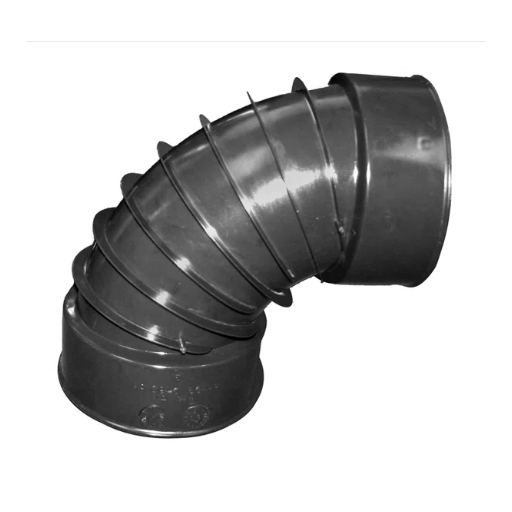
Regular Inspection and Repair Strategies
Regular maintenance for HDPE pipe systems follows a specific procedure, which includes regular inspections to prevent failures from occurring, detect issues early, and maintain system performance at an optimal level. Additionally, this approach includes conducting regular system inspections through detailed checking framework,s which include NDT methods like ultrasonic testing or infrared thermography that check material imperfections, joint fractures, or leaks without damaging the system.
Operators should utilize monitoring tools equipped with sensors that enable detection of pressure, temperature, and chemical changes within the pipes. This allows them to analyze and monitor in real-time and spot issues that could lead to bigger problems if left unattended.
Moreover, basic cleaning activities like pigging should be performed to remove any sediment biofilm or debris that may restrict flow or reduce efficiency. In repair situations, fusion welding techniques, like butt or electrofusion, are widely accepted as the gold standard owing to their capability to maintain structural integrity while also providing immaculate connections. Detailing every inspection, including data, findings, and repairs done, is vital for trend analysis, compliance validation, and improving strategic long-term maintenance frameworks.
If these strategies are included in an extensive asset management framework, HDPE pipe systems can provide unmatched durability, cost-effectiveness, and operational reliability across multiple applications.
Understanding the Impact of Chemical Exposure
The chemical resistance of HDPE (High-Density Polyethylene) pipe systems is determined by the nature of the chemical, the concentration, temperature, and the duration of exposure. HDPE is well known for its ability to withstand a wide variety of chemicals including acids, bases, salts, and organic compounds. This is due to its non-polar molecular structure and high crystallinity which minimizes permeation and degradation over time.
However, not all chemicals interact with HDPE in the same manner. At elevated temperatures, oxidizing agents such as concentrated nitric acid or chlorine may start to degrade the material. Also, extended exposure to certain hydrocarbons can lead to softening, swelling, or stress-cracking of aromatic or chlorinated solvents in the polymer matrix. The amount of damage done also depends on the strength and length of the exposure to the chemical. For instance, it has been shown that HDPE pipes can withstand 50% sulfuric acid at 73°F without losing structural integrity, but higher temperatures and concentrations tend to increase the rate of material fatigue.
The periodic analysis of the operational environment, as well as the manufacturer-specific chemical resistance charts, are equally important for system longevity.The correct choice of HDPE piping system material, along with real-time monitoring of operational conditions, guarantees a strong approach to risk mitigation stemming from potential chemical exposure.
Adapting to Industrial and Sewage Applications
High-Density Polyethylene (HDPE) piping systems offer distinctive advantages with respect to mechanical properties and resistance to aggressive chemical environments which makes them crucial for industrial and sewage applications. During industrial processes, they are used for transporting a wide range of chemicals, acids, and alkali solutions while mechanically enduring changes in temperature and pressure. Their impact resistance, combined with low permeation, also makes them an effective safeguard against leaks and environmental contamination.
In sewage applications, HDPE pipes manage both liquid and solid waste under various flow rates and patterns. Their smooth inner surfaces further reduce frictional losses, leading and enhancing flow while concurrently minimizing the probability of blockages during long operational durations. Additionally, flexible HDPE pipes have relatively high resistance to the primary sources of corrosion, biological degradation, and scaling, which makes their lifespan often exceed 50 years, vastly outpacing traditional piping materials.
HDPE piping nowadays not only utilizes advanced manufacturing techniques but also requires compliance with international standards regarding operational safety and durability, increasing their applicability in urban and industrial infrastructure. With proper system design and maintenance, stringent standards of these demanding applications are exceeded while setting benchmarks for performance.
Reference Sources
Frequently Asked Questions (FAQs)
Q: What are HDPE fittings, and why are they important in piping systems?
A: HDPE fittings are components used to connect HDPE pipe products. They are crucial because they ensure a secure and leak-free connection in various piping systems, such as water supply, sewer, and industrial applications.
Q: How do electrofusion fittings differ from other types of HDPE fittings?
A: Electrofusion fittings use an electrical current to weld the fitting to the pipe, creating a strong and reliable joint. This method is particularly suitable for installations where a high degree of reliability is required, such as in gas and water distribution systems.
Q: What is meant by high-density polyethylene in the context of HDPE pipe connectors?
A: High-density polyethylene (HDPE) is a type of thermoplastic made from petroleum. It is known for its high strength-to-density ratio, making it ideal for manufacturing durable and flexible pipes and fittings that can withstand high pressure and harsh environments.
Q: Can you explain the category of HDPE fittings that includes valves and specialty components?
A: This category includes HDPE fittings designed for specific functions, such as controlling flow with valves or connecting pipes in unique configurations with specialty components. These fittings are manufactured to meet the technical requirements of specific applications.
Q: What does nominal diameter mean for HDPE pipes?
A: Nominal diameter refers to the approximate internal diameter of the pipe. It is a standard dimension used to classify the size of pipes and fittings, ensuring compatibility and ease of installation.
Q: How is SDR related to HDPE pipes and fittings?
A: SDR, or Standard Dimension Ratio, is a measure of the pipe’s wall thickness relative to its diameter. It indicates the pressure rating and strength of the pipe. A lower SDR indicates a thicker wall and higher pressure rating.
Q: What role do clamps play in connecting HDPE pipes?
A: Clamps are accessories used to secure HDPE pipe connections, providing additional support and stability. They are often used in conjunction with fittings to ensure a tight and leak-proof seal.
Q: What considerations should be made when selecting HDPE pipe products for a specific application?
A: Considerations include the type of fluid being transported, pressure and temperature conditions, and environmental factors. It is also important to select the right category of fittings, such as electrofusion or mechanical, and ensure they are suitable for the specific application requirements.
Q: What is the significance of resin in the manufacturing of HDPE fittings?
A: Resin is the raw material used in the production of HDPE fittings. The quality of the resin determines the strength, flexibility, and durability of the fittings, making it a critical factor in the overall performance of HDPE pipe systems.



